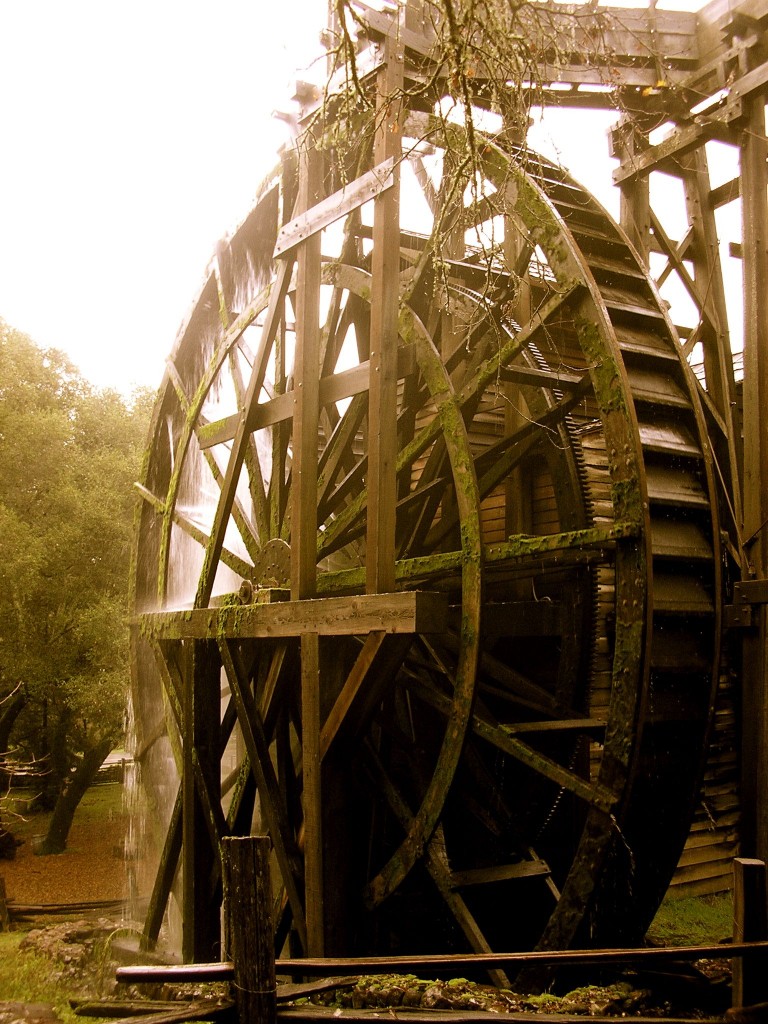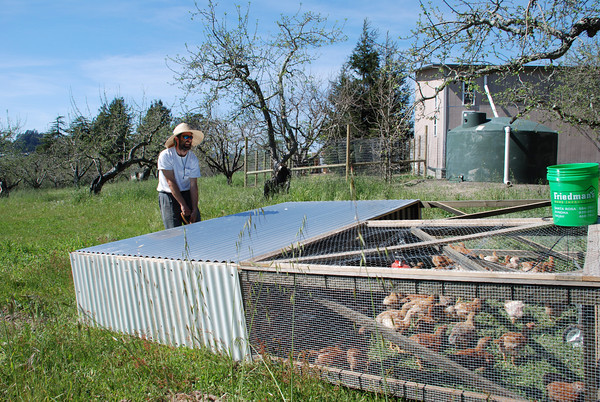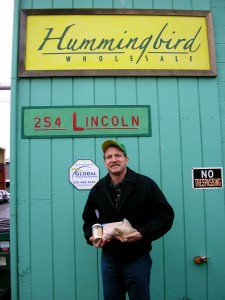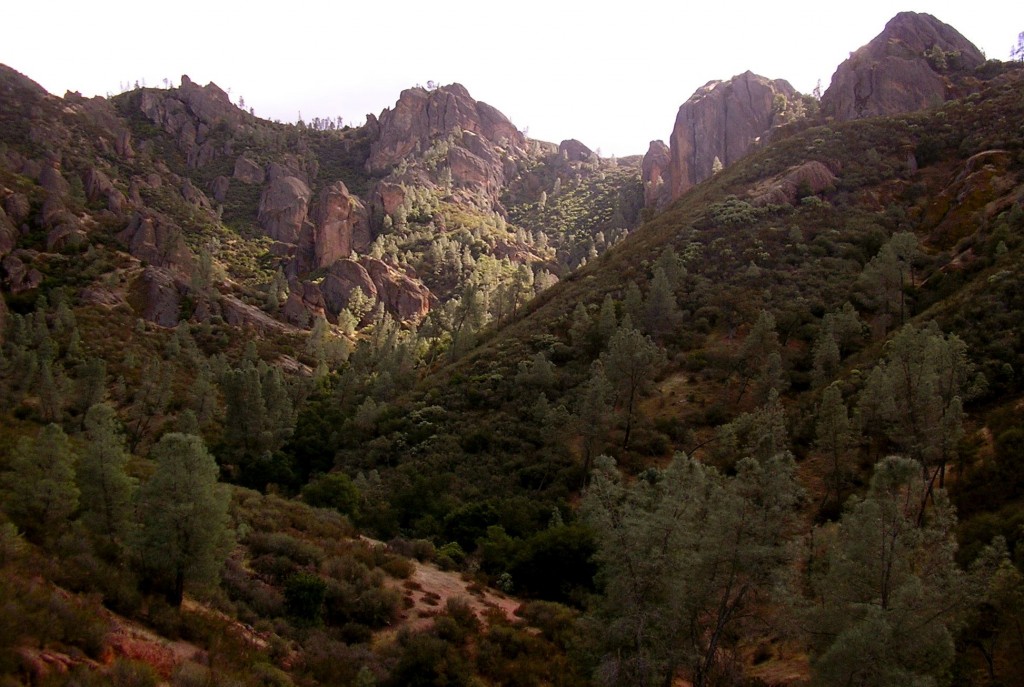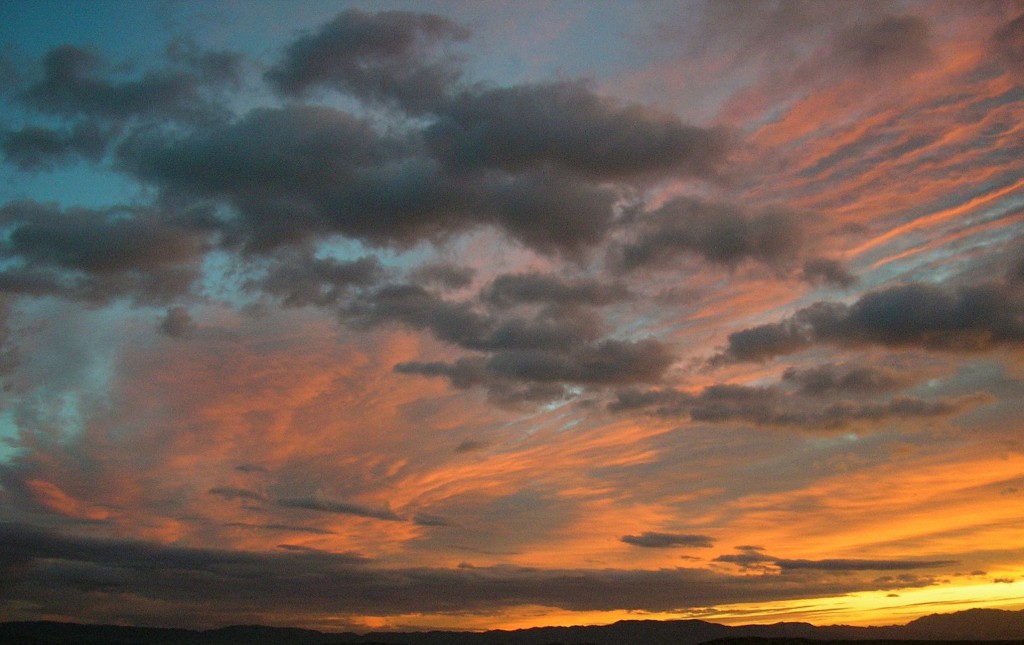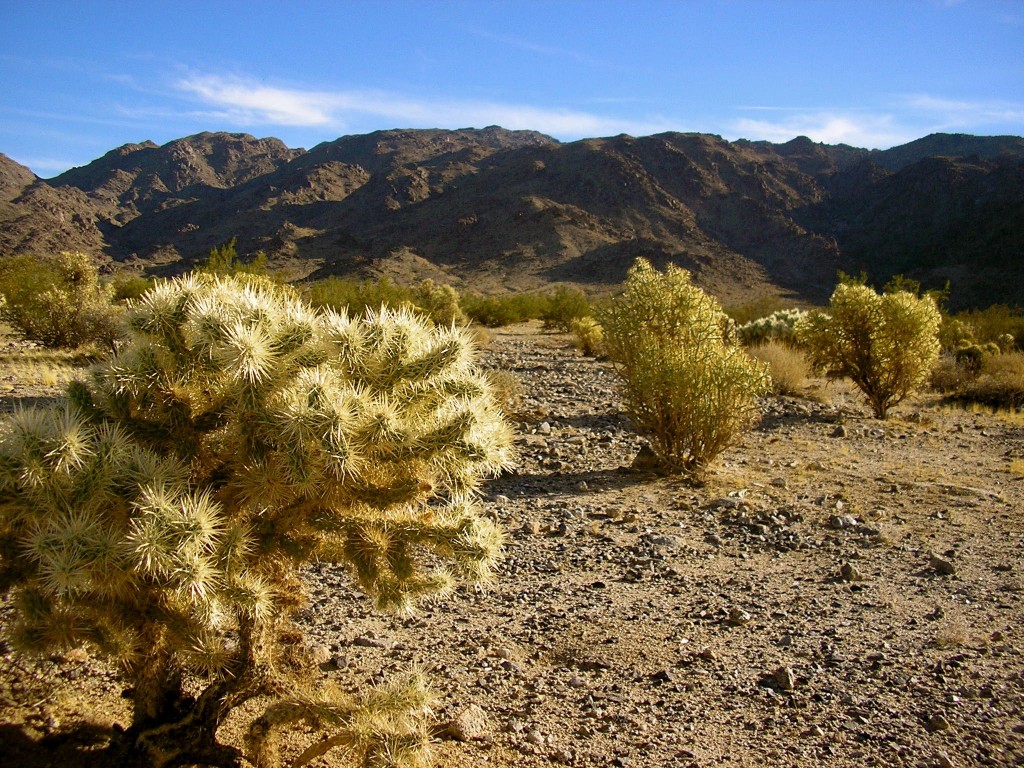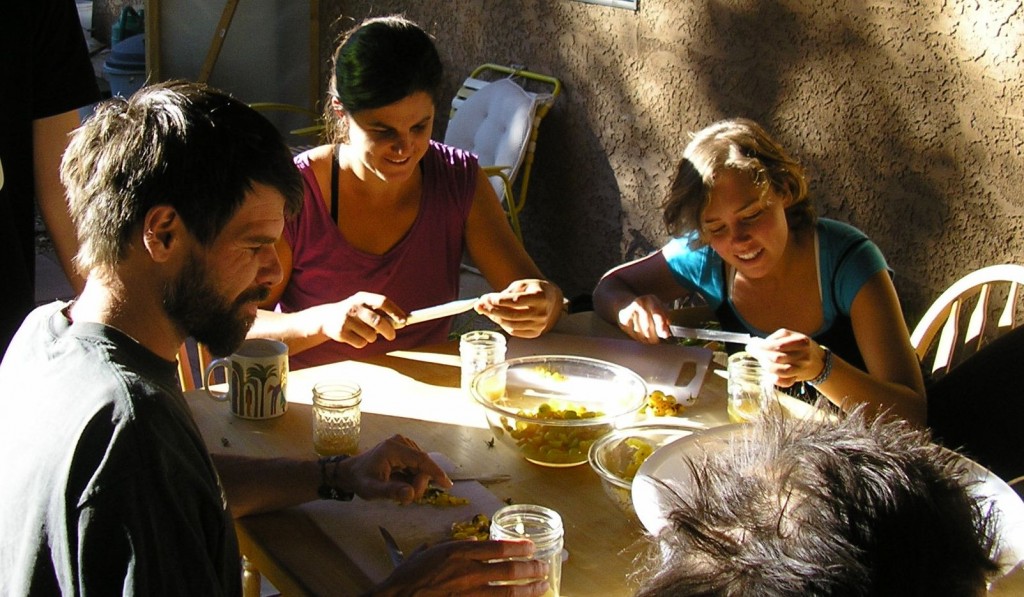My family and I visited the Bale Grist Mill near Calistoga today. After doing extensive research on an organic grain production project in Oregon, I was fascinated to learn about Northern Califoria’s history of grain growing and milling. In the mid 1800’s the Napa Valley was a prosperous grain growing region, and the Bale Grist Mill was its hub. Much of the grain grown in Sonoma County was millled at the Bale Mill, due to its efficiency. Founded in the 1840’s by an unsavory doctor from England, who married General Vallejo’s niece, the Mill only became profitable after Dr. Bale died and his wife took over. She hired millwrights that rebuilt the mill in the 1850’s with the help of The Young Mill-wright and Millers’ Guide written by inventor Oliver Evans in 1795. This book detailed Evans’ invention of a fully automated, water powered grist mill, an innovation that laid the ground work for the industrial revolution.
Category: Content (Page 4 of 11)
Zazu Farm has teamed up with Felton Acres and will now be managing their 3 market gardens. The produce will supply zazu, the zazu farmstand, the Felton family, and their employees. Marc Felton has decided to focus on raising chickens, turkeys, goats and hogs. Inspired by the Joel Salatin and the Omnivore’s Dilemma, Marc left a career at Google to start a diversified farm.
I spent two weeks in December studying food aggregation efforts in Oregon. I met with farmers, toured distribution warehouses, and interviewed chefs and other food buyers. The most interesting and effective example of aggregation I found is the Southern Willamette Valley Bean and Grain Project. This project was spearheaded by the Ten Rivers Food Web. Two local farmers teamed up with the project and raised the money to build mills on their properties. The Bean and Grain Project hosted an event called “Fill Your Pantry”, where consumers could buy beans and grains direct from the farmers. The event was a huge success, but some of the larger farms had trouble handling a large volume of retail sales. This sort of one time market could be sponsored by an organization like Sonoma County Farmtrails, and feature products that can last in a pantry like pickles, beans, and winter squash.
Hummingbird wholesale is a medium sized distribution company in Eugene. Co-founder Julie Tilt has worked with the Bean and Grain Project since the beginning. With and average of 20% growth a year they have out grown 2 locations in 7 years and are about to move into a third. They use bicycles to deliver much of their produce.
My sisters and I hosted the 3rd Farmer’s Brunch at zazu today. The topic of the meeting was the Farm to Institution initiative being sponsored by the Sonoma County Health Department. We welcomed the directors of Santa Rosa City Schools food program, Memorial Hospital Food Program, and their food buyers. Farmer’s in attendance were both large and small, from Gourmet Mushrooms to Silva Star Farms. We also welcomed founding members of the Spiral Foods Co Op, Jana Hill from the Health Department, and Heidi Herman from the California Alliance for Family Farms.
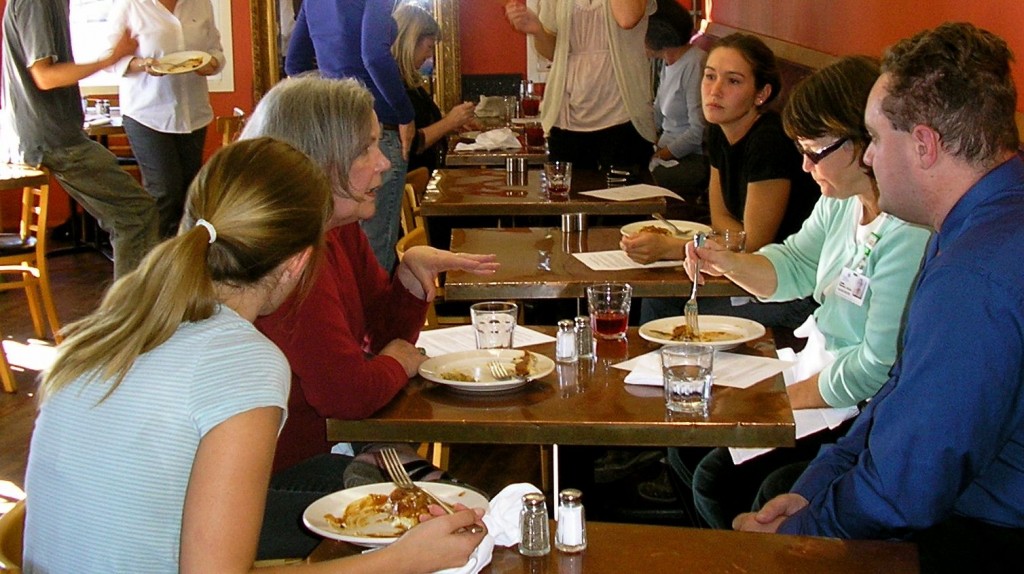
Clockwise from left: Sarah Mitchel, Meg Hill from Gourmet Mushrooms, Sarah Silva of Silva Star Farms, Linda Hansen and Nick Gaddini from Memorial Hospital discuss distribution issues.
We feasted on Turkey from Felton Acres, Canvas Ranch chard, and stuffing with ingredients from Strong Arm Farm. All of the ingredients and labor were donated by the members of the North Coast Farmer’s Collective, which puts on the brunch. Chef Tara created the meal from what the farmers had available, then Casey and my sisters, Sarah and Elena, helped her prepare it.
I was dismayed by the fact that we had 9 food buyers show up and only 8 farmers. Most of the farmer’s I talk to are focused on selling direct to the consumer, because they can make the most profit. These consumers tend to be upper-middle class, and they occupy a relatively small slice of society. Currently there are lots of small farmers competing for this small segment of the market. Farmer’s Markets are innudated with high-priced produce, meanwhile the directors of local school and hospital programs can’t find one farmer willing to contract with them. In my mind, the wealthy consumer is low hanging fruit, and farmers may have to increase the scale of their operations to find other outlets for their produce. Finding wholesale outlets will end up saving them a ton of work on the retail end. Farmers, I implore you, let’s work together to scale up and bring fresh local produce into the schools and hospitals, to the sick and underpriviledged who need it most.
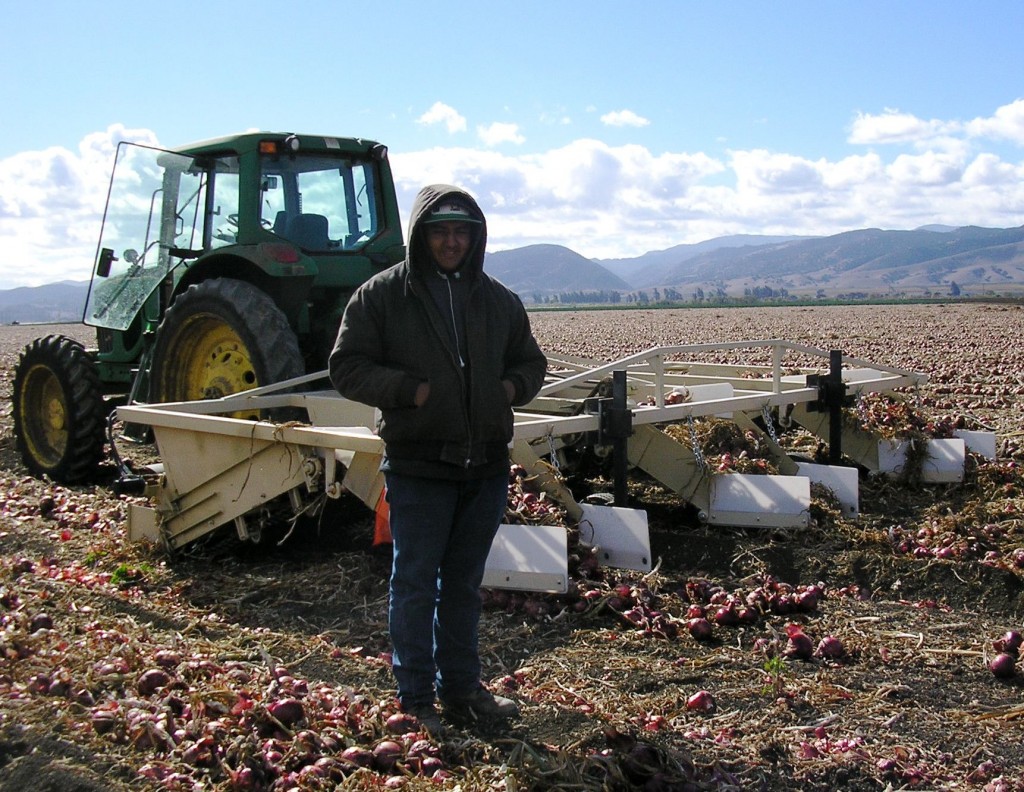
Armando next to a onion digging tractor implement. This machine digs the onions up and deposits them on top of the soil. They are allowed to dry and then another machine comes along to pick them up and conveyor them into a truck. They are then trucked to a facility that packs them.
Still making my way back from Arizona, I decided to make a side trip to Pinnacles National Monument. On my way there I stopped to photograph some of the lush fields of vegetables in the Salinas Valley. In a massive field of onions I met Armando, who told me about how he farms.

Unlike the onions, this cauliflower is cleaned and boxed right in the field. The efficiency of this mobile packing operation is impressive.
The Salinas valley is intensively farmed, and produces a massive amount of food, but this level of industrial production requires an obscene amount of fossil fuel inputs in the form of pesticides and fertilizer. This method of farming also depletes the soil, and causes erosion, so that more and more inputs are required for the same yield. I believe it is time for us, as a society, to re-evaluate agricultural inputs. We have so much to learn from nature. At Seed School, renown permaculture pioneer and former Harvard geneticist Toby Hemenway gave a lecture on this topic. Read his lectures here.
When I arrived at the Pinnacles I was struck by a lush chaparral plant community, thriving in steep rocky soil, nearly devoid of nutrients. The landscape is dominated by chamise, buckwheat, ceanothus and digger pine. Chamise, a heather-like plant, actually relies on fire to propagate itself. These same chaparral plants also thrive in Sonoma County; from the slopes of St Helena to Gunsight Rock.
For further reading about the Salinas Valley, check out East of Eden by John Steinbeck. Considered by Steinbeck to be his best work, East of Eden captures the beauty and the sadness of the Salinas Valley in an epic story about farming, family, and morality.
My clutch went out just as I entered 29 Palms today, so I’m stuck here until I can get it replaced. Luckily, there is beautiful desert hiking surrounding this town, which is the main outpost for the largest US Marine base in the world. When camping in nearby Joshua Tree, you can hear loud booms at night from the base, where they do a lot of training for missions in Iraq and Afganistan. Just last week a battalion headed from 29 Palms to Helmand province in Afganistan. While my truck was being fixed I met a woman who grew up in the area and lives in a ghost town. She told me stories about her father, a prospector, and her grandmother, a Cherokee Indian whose family came to California on the Trail of Tears. She told me that when she was a child some landowners would spread wildflower seed on the valleys by airplane before a rain, and she recounted fields of waist-high blue flowers. This region once possessed rich natural resources (rivers, minerals, rich soil), but after centuries of exploitation, only a poverty stricken skeleton of past abundance remains. Many of the marines coming back from the wars in the Middle East are jobless and destitute, some live on the streets of 29 Palms. The town is also a food desert, with fast food joints dominating the culinary landscape, and very little fresh food available.
The Galina tomato is a yellow cherry tomato that was developed in Siberia, and brought to the US by Bill McDorman. Galina tomatoes were chosen as one of Organic Gardening’s ten best early tomatoes. The gardeners of Siberia made an important contribution to vegetable diversity while the Soviet Union was in power. In the USSR, apartment dwellers were allowed access to a garden plot in the country called a dacha. The dacha growers did not have access to seed catalogues, so they only planted seeds they saved, and selected the best varieties year after year. Because there were so many different gardens with their own seed selectors, the community functioned like a genetics laboratory. Since they saved the seeds from the earliest and the best tomatoes, over time the flavor and speed of ripening vastly improved.
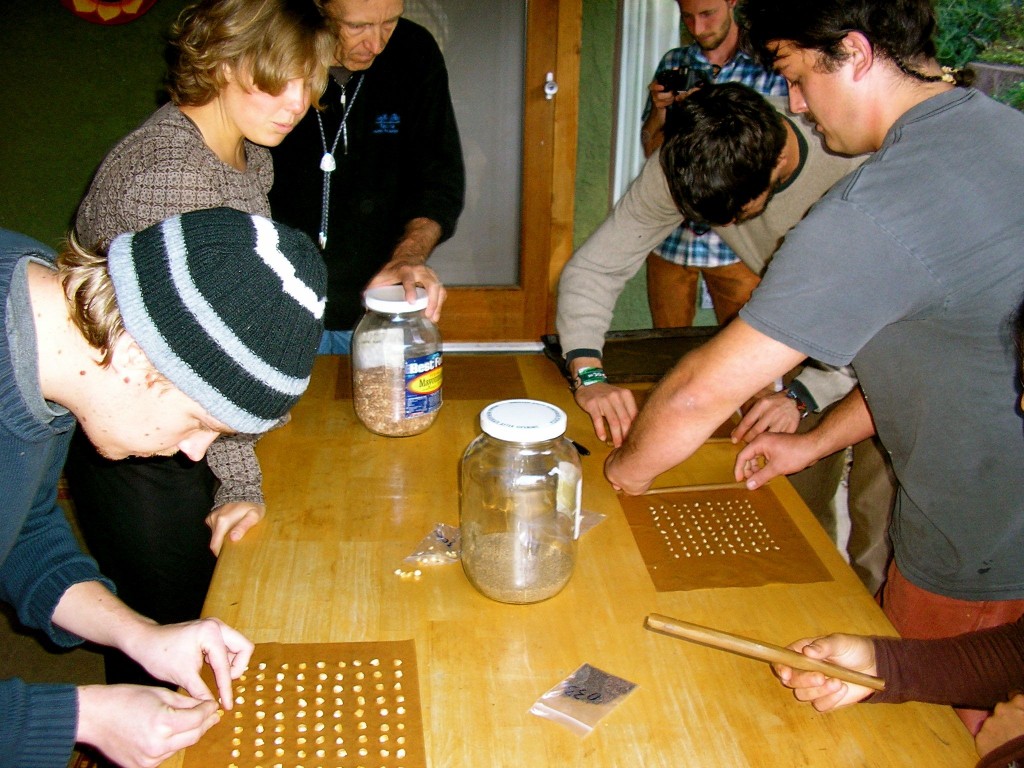
Seed School students roll up their seed grids in germination paper. We are going to let them germinate and then determine the percentage that did. Seed farms must perform these tests to pass state regulations.
At Seed School we are learning about the science, business and magic of seeds. Bill McDorman has been in the seed business for 30 years and is a passionate lecturer. Our first seminar was on the history and future of the seed business, with an introduction to plant genetics and breeding. The School is in the Verde Valley, just south of Sedona. This is the high desert, and the Valley is surrounded by magnificent plateaus with sandstone hues that range from black to bright red. There are lots of beautiful wildflowers growing wild around, and we will be wildcrafting some seeds later in the week. The seed business has experienced a frightening level of consolidation in the past few decades, which threatens the diversity of our food crops. Part of the mission of Seed School is to empower communities to select, save and share seeds.
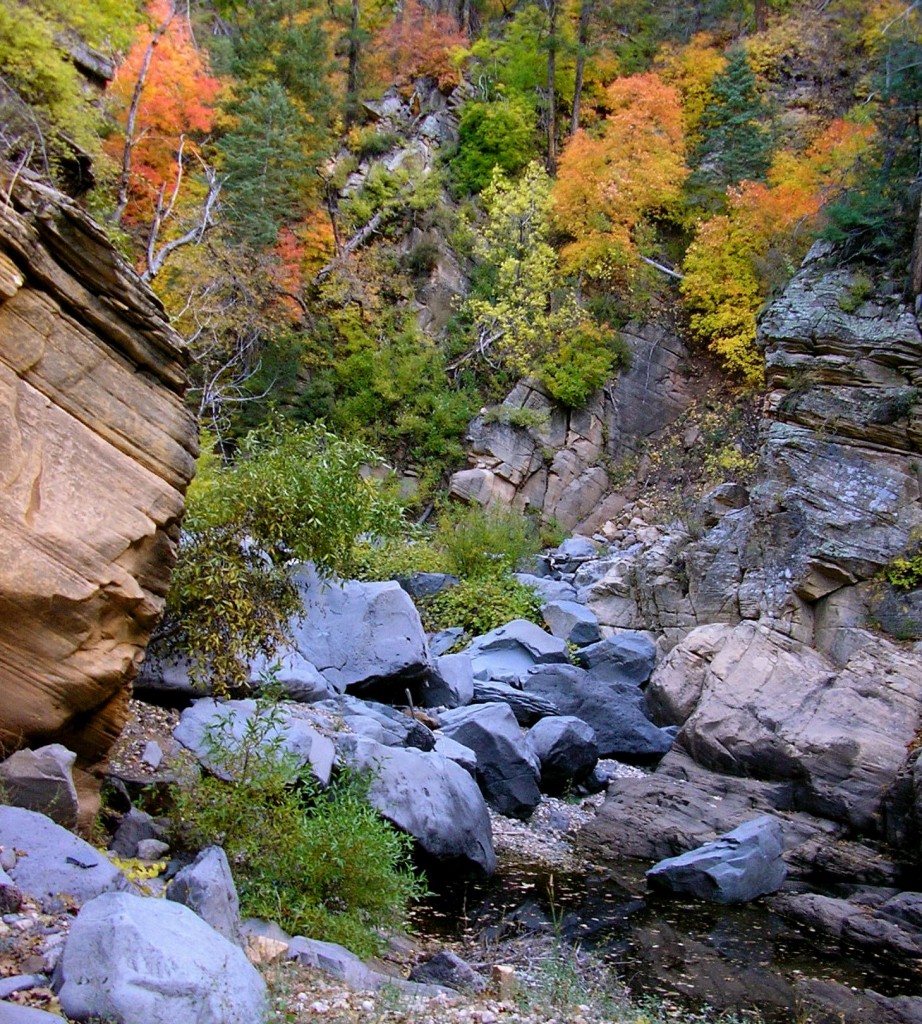
Striking fall color dotted the cliffs of Pumphouse Wash, a beautiful hike up a slot canyon that carries water from the Colorado Plateau to Sedona.
Arizona is home to some of the most diverse and beautiful desert landscapes I have ever seen. I started out in the Mohave this morning. Despite being desolate and poverty stricken, this region looks like a scene from Mars; no wonder the UFO people love it.
Next I arrived in Flagstaff, on the Colorado Plateau, where the high desert is characterized by conifers, meadows grasses, and wildflowers.
Descending the Colorado Plateau, I was struck by fiery Fall color lighting up steep canyons of conifers and Coconino sandstone cliffs. Here I found Pumphouse Wash, and hiked up it. Red oaks, big leaf maples, cottonwood, and aspen share the walls of the canyon with several species of conifer.
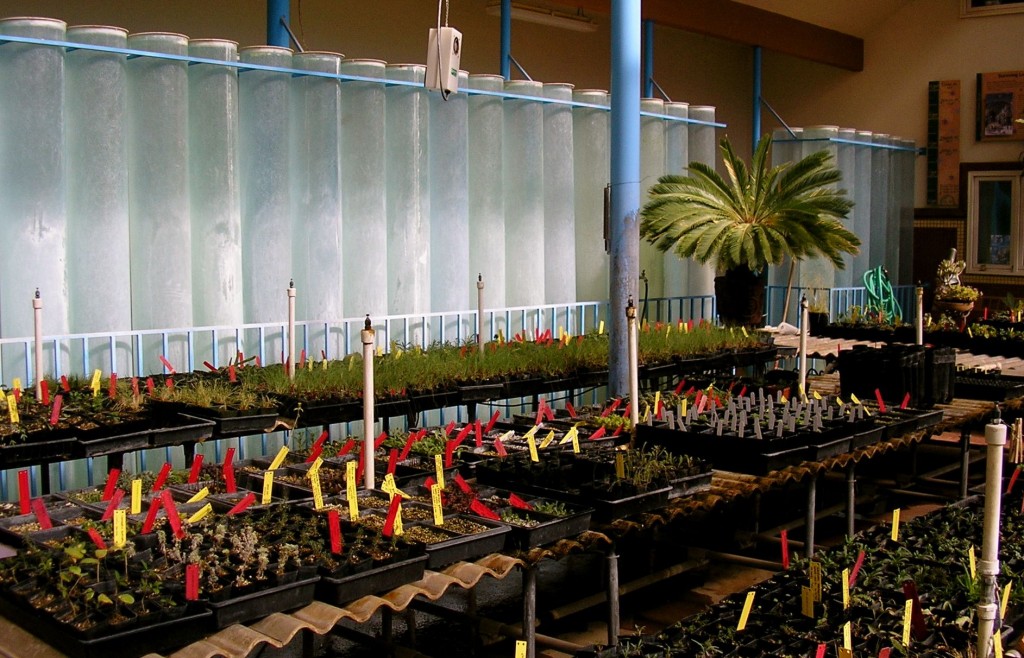
The greenhouse inside the Flagstaff Arboretum's innovative horticultural research and propagation center. In the background are plastic tubes filled with water. This passive solar system heats up during the day and keep the plants warm at night. The tubes also help cool the greenhouse during the day.
I’m on my way to seed school in Arizona, and I traveled through the Central Valley today. I stopped at Harris Ranch to photograph their industrial cattle operation. The stench is almost overpowering, which makes me wonder how the cowboys stand herding in this manure pit day after day. Harris Ranch is representative of Central Valley agriculture as a whole: massive quantities of food being produce in an industrial manner.
